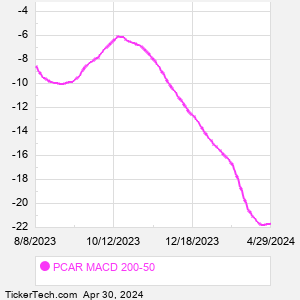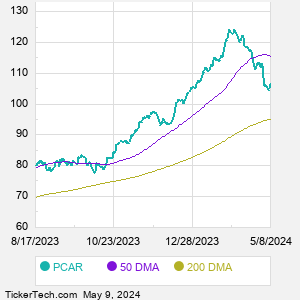PACCAR is a multinational company operating in the following principal segments: the Truck, which includes the design manufacture and distribution of light-, medium- and heavy-duty commercial trucks; the Parts, which includes the distribution of aftermarket parts for trucks and related commercial vehicles; and the Financial Services, which includes finance and leasing products and services provided to customers and dealers. Co.'s other businesses include the manufacturing of industrial winches in two U.S. plants and marketing them under the Braden, Carco and Gearmatic nameplates.
When researching a stock like PACCAR, many investors are the most familiar with Fundamental Analysis — looking at a company's balance sheet, earnings, revenues, and what's happening in that company's underlying business. Investors who use Fundamental Analysis to identify good stocks to buy or sell can also benefit from PCAR Technical Analysis to help find a good entry or exit point. Technical Analysis is blind to the fundamentals and looks only at the trading data for PCAR stock — the real life supply and demand for the stock over time — and examines that data in different ways. One of those ways is to calculate a Simpe Moving Average ("SMA") by looking back a certain number of days. One of the most popular "longer look-backs" is the PCAR 200 day moving average ("PCAR 200 DMA"), while one of the most popular "shorter look-backs" is the PCAR 50 day moving average ("PCAR 50 DMA"). A chart showing both of these popular moving averages is shown on this page for PACCAR. Comparing two moving averages against each other can be a useful visualization tool: by calculating the difference between the PCAR 200 DMA and the PCAR 50 DMA, we get a moving average convergence divergence indicator ("PCAR MACD"). The PCAR MACD chart, in conjunction with the chart of the moving averages, basically helps in visualizing how the moving averages are showing convergence (moving closer together), or divergence (moving farther apart). |



